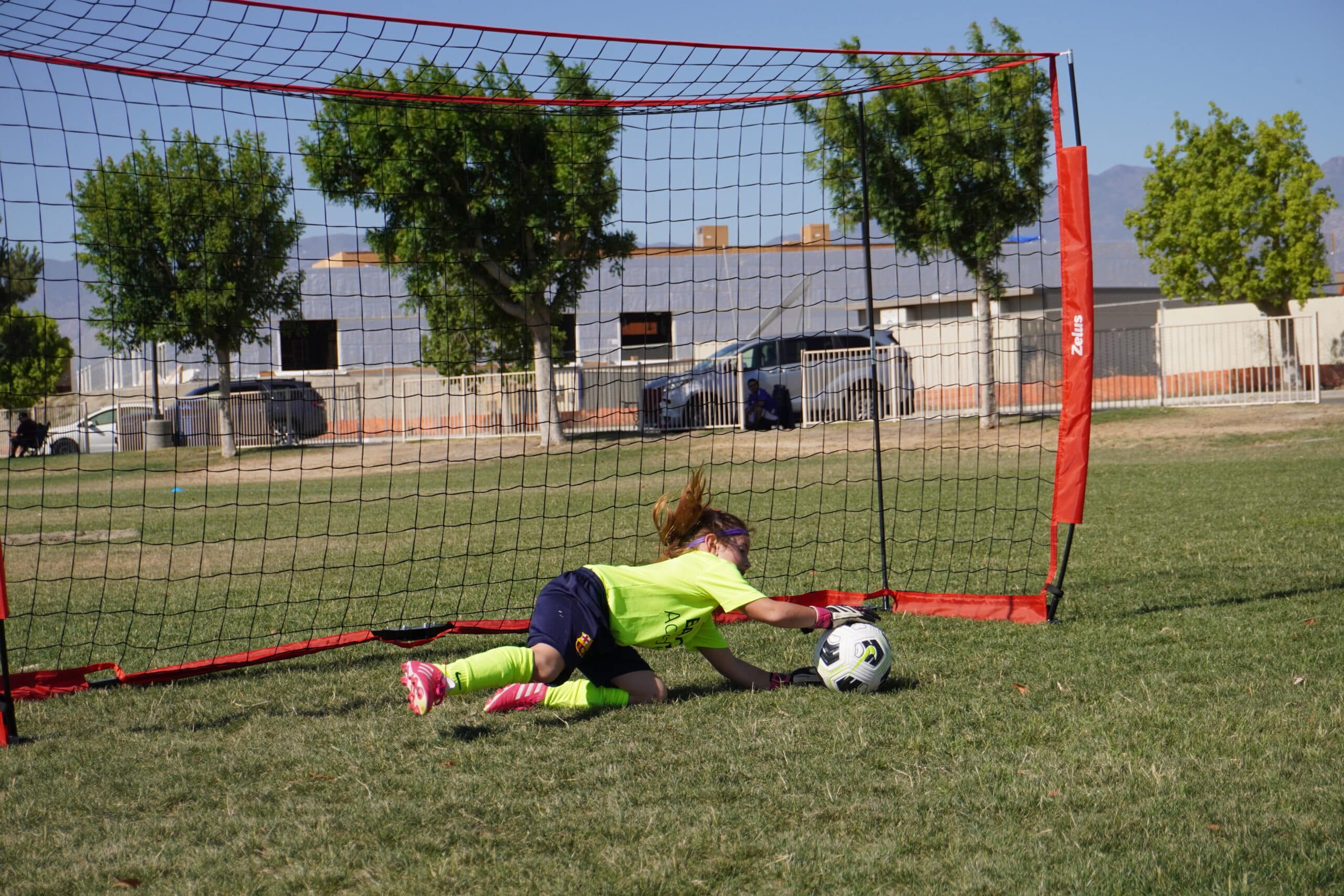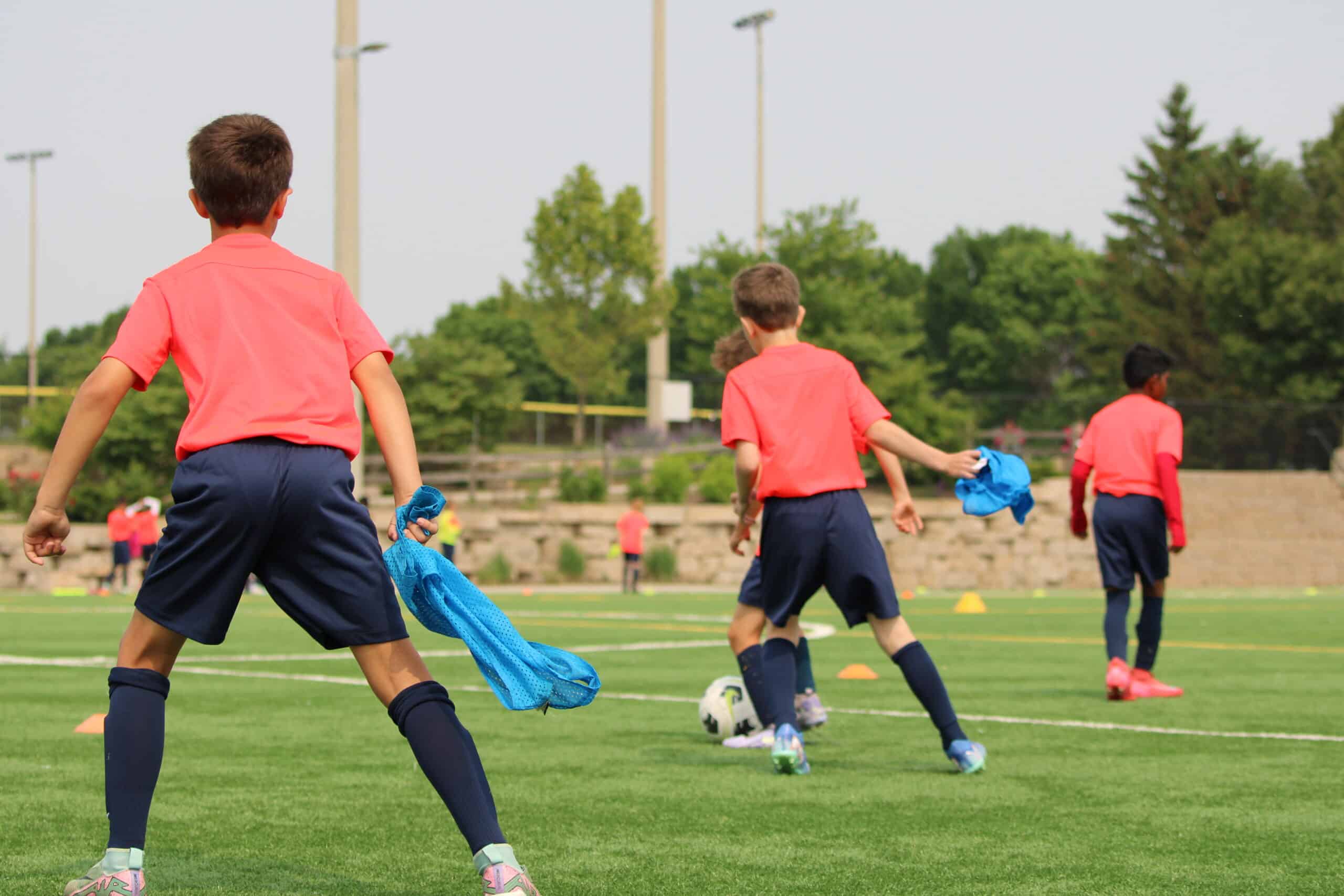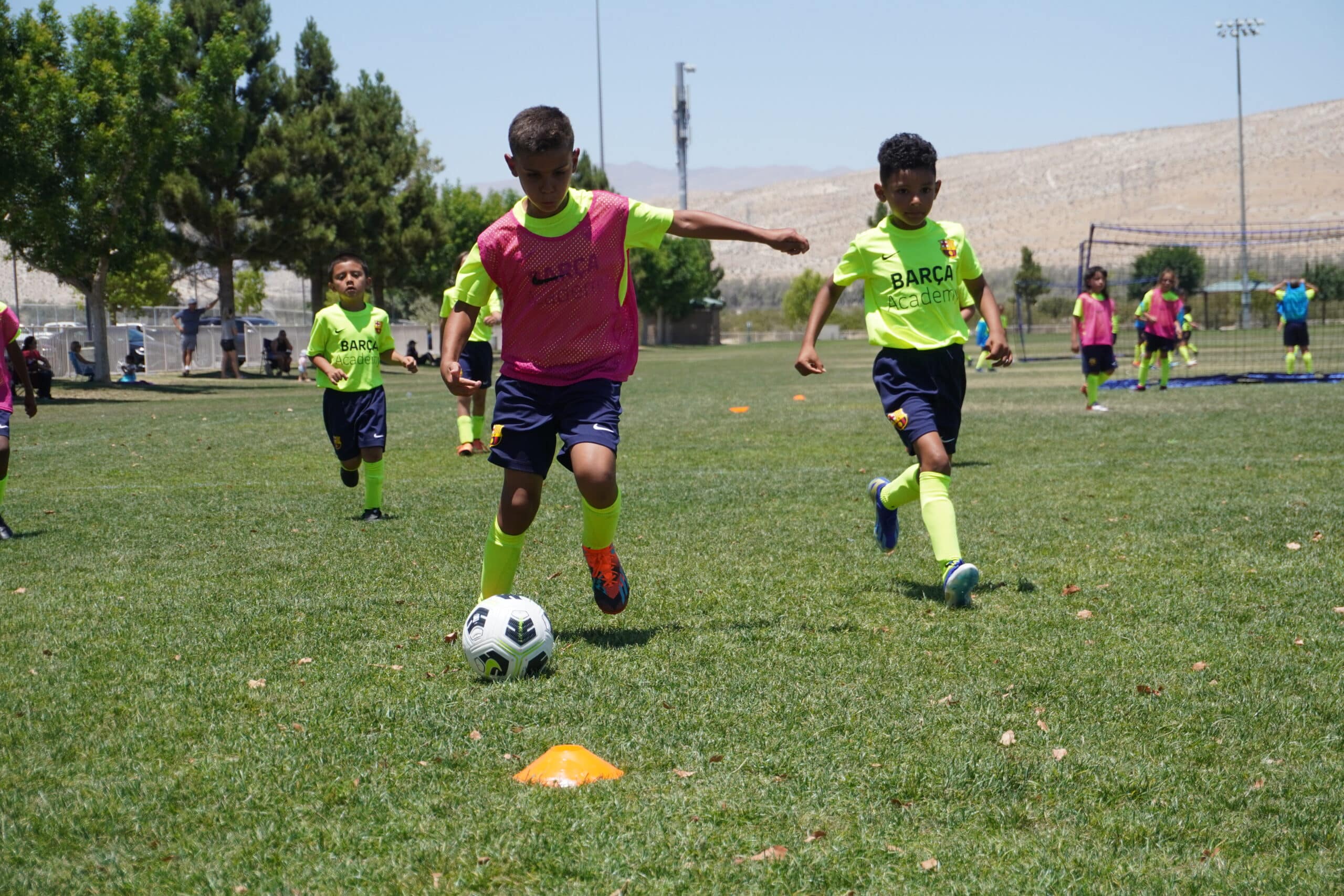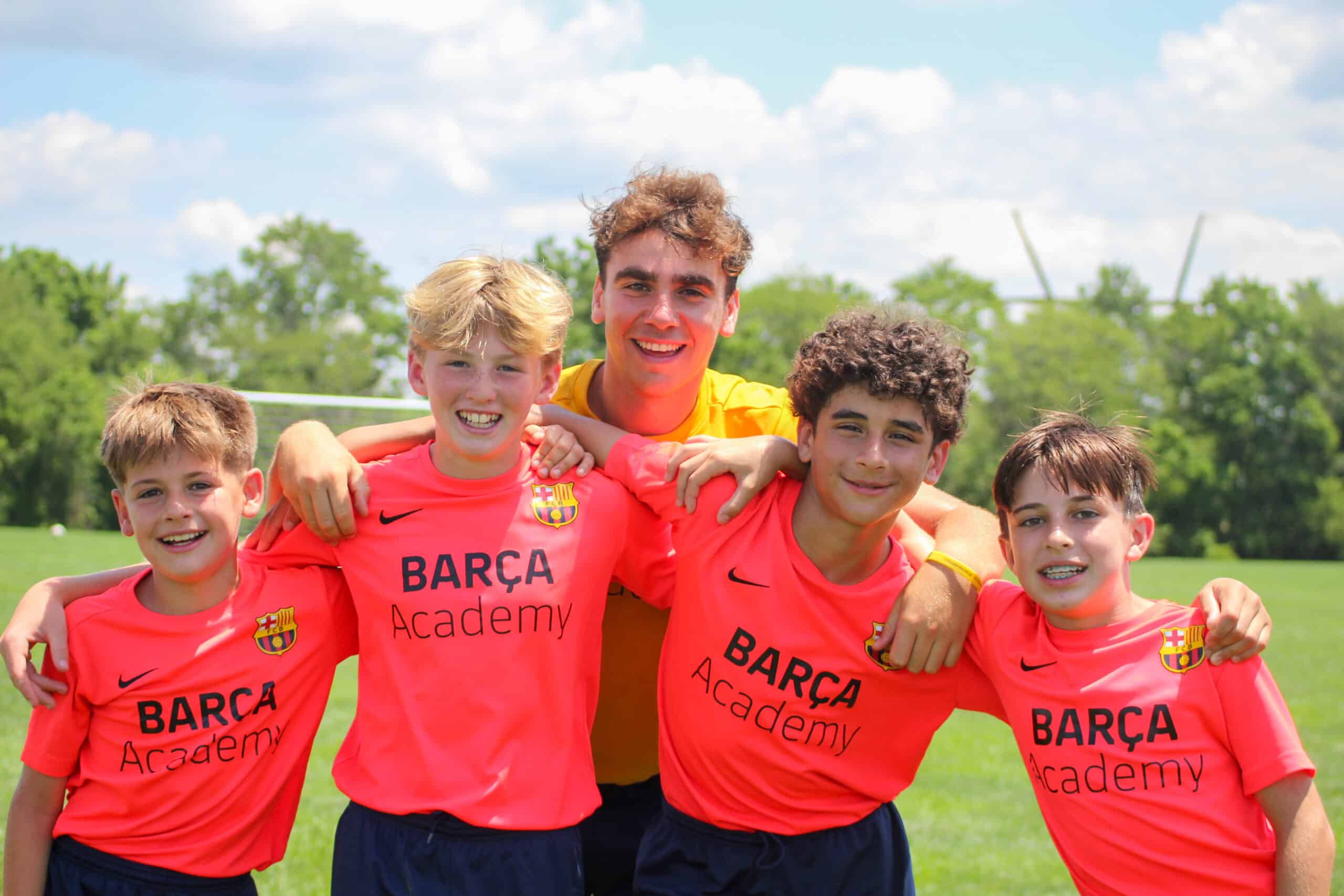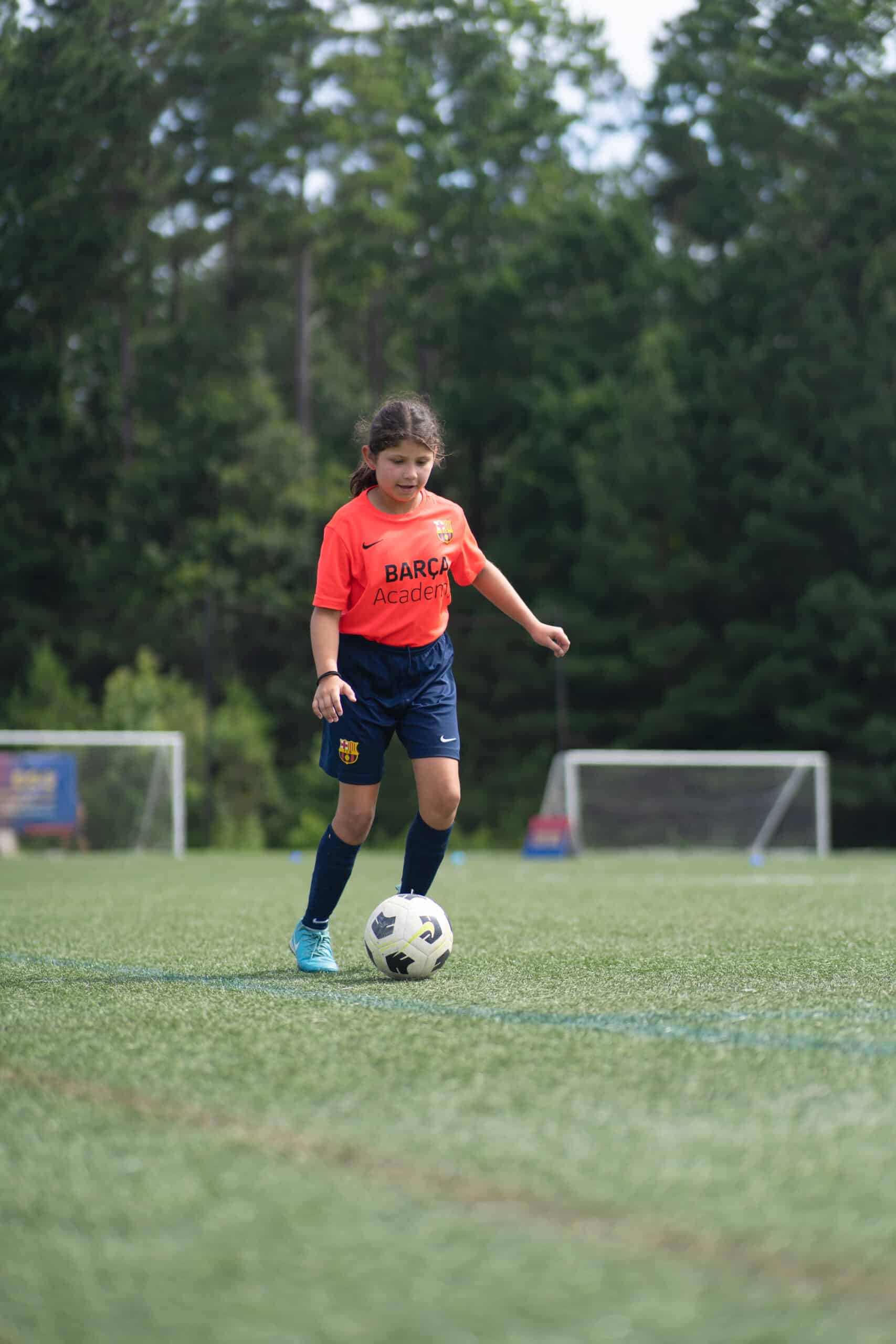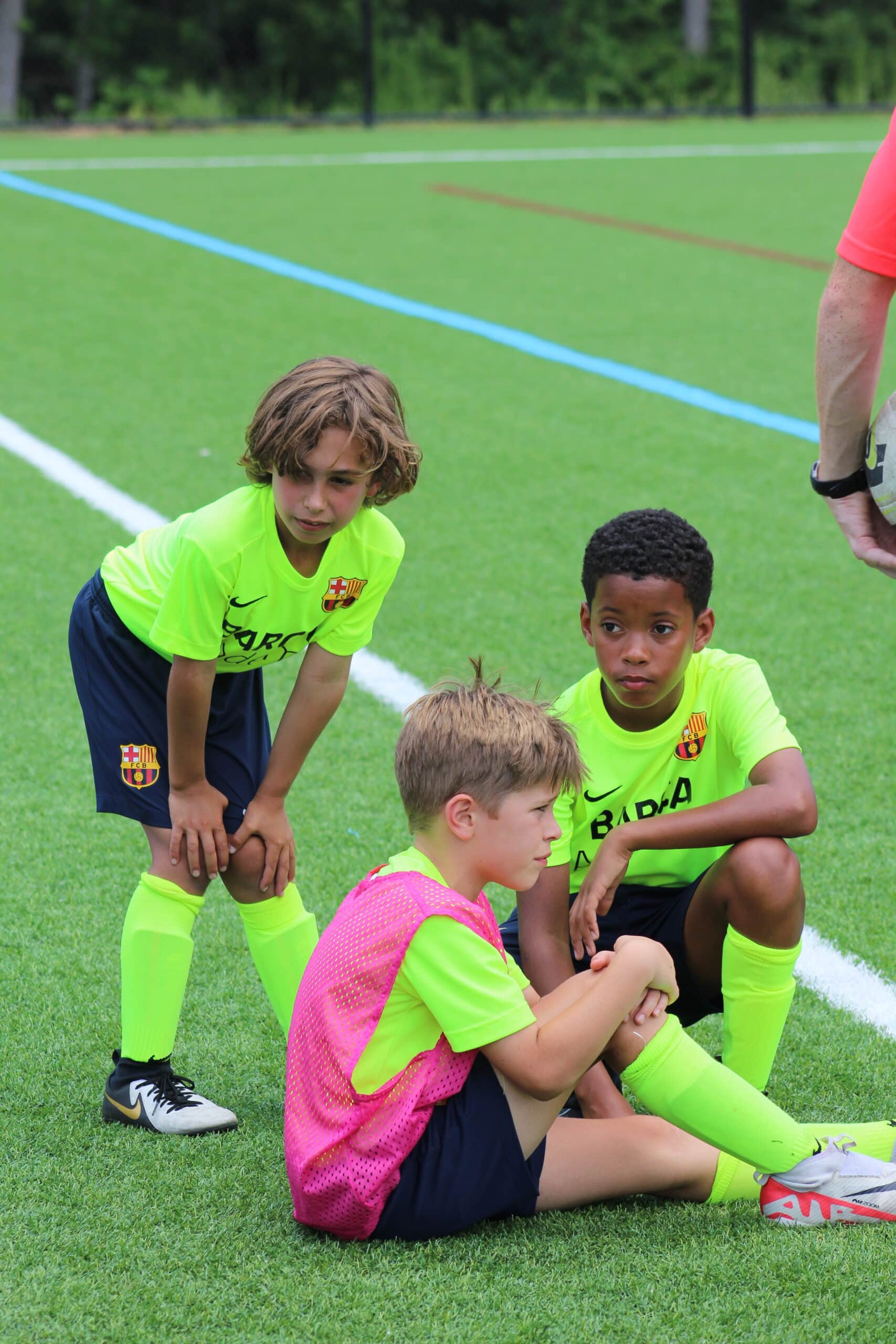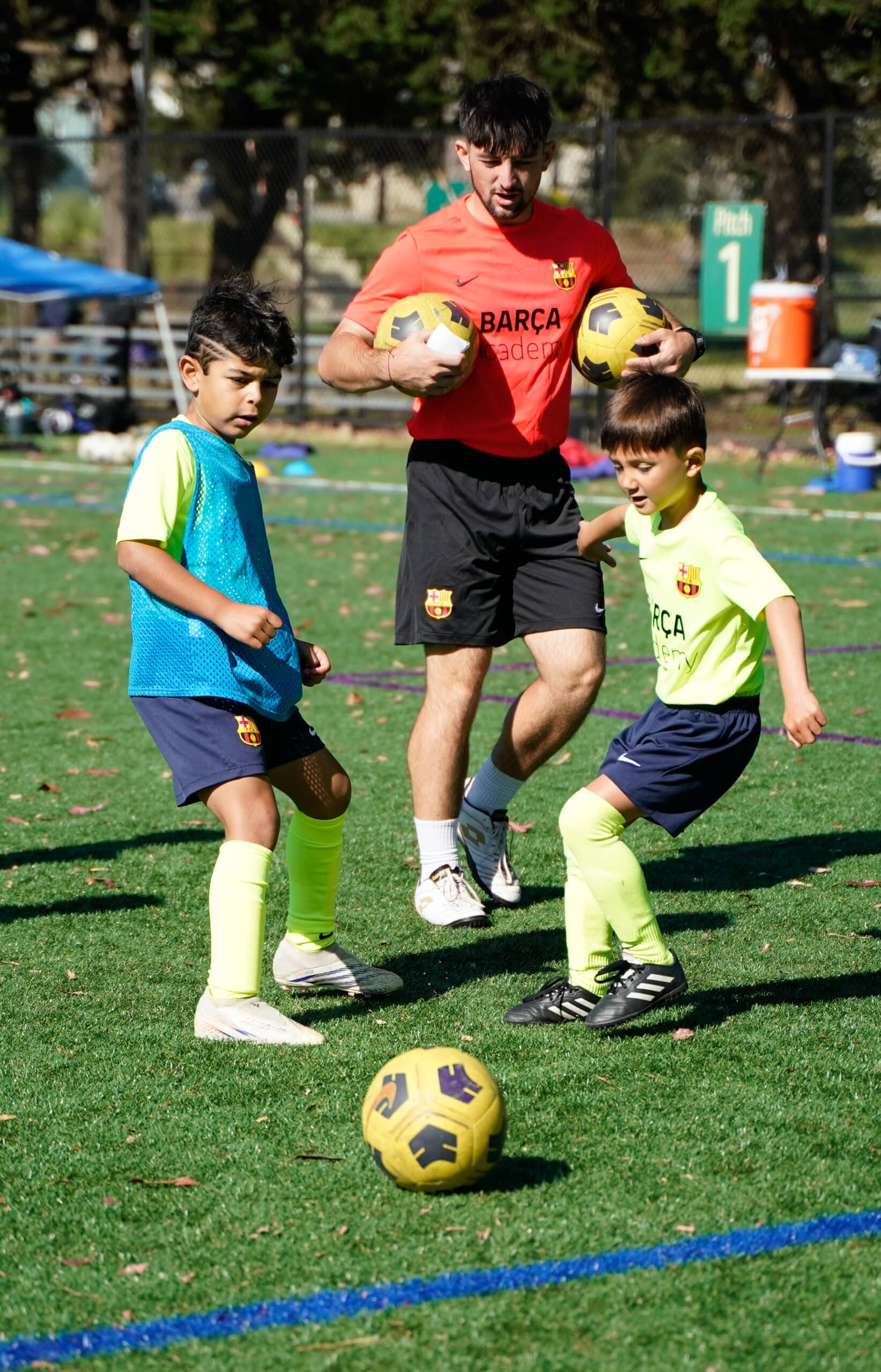If you’re a soccer enthusiast or an aspiring goalkeeper, you might already know that goalkeeping is not just about blocking, diving, and catching the ball. One aspect that often gets overlooked but is equally crucial is footwork.
Footwork, quite literally, lays the foundation upon which a goalkeeper can perform at their best. You may wonder, why is footwork so essential for a goalkeeper?
- Positioning: Good footwork allows a goalkeeper to position themselves correctly. This positioning is crucial because it directly affects the goalkeeper’s ability to react promptly and effectively. A split-second can make the difference between stopping a goal or letting one through.
- Balance: No matter how strong or agile a goalkeeper might be, without effective footwork, maintaining balance can be challenging. Proper footwork ensures the goalkeeper is stable and grounded, allowing them to make leaps and dives without losing their balance.
- Speed: A goalkeeper often has to cover the width of the goalpost in mere seconds. This movement requires speed, which is directly influenced by the goalkeeper’s footwork. Good footwork will allow them to move laterally at a quicker pace.
Now that we understand the importance of footwork, it’s essential to know that perfecting this skill requires regular practice and training. It does not come naturally. Top professional goalkeepers often attribute their success to hours spent improving their footwork.
But don’t be disheartened! With a dedicated mindset and consistent practice, you’ll soon start to see improvement in your footwork, subsequently enhancing your overall goalkeeping skills.
Learning from the Experts
Looking at the world of professional soccer, we can see that the best goalkeepers are also the ones with fantastic footwork. For example, David de Gea, the superb goalkeeper for Manchester United and Spain, is often lauded for his incredible footwork. His nimble feet, combined with his agility, have made him one of the top goalkeepers in the world.
Another example is Alisson Becker, the Brazilian goalkeeper for Liverpool. Known for his rapid reflexes and positioning, Becker’s top-notch footwork allows him to swiftly close the distance between himself and the ball, ensuring he’s always at the right place at the right time.
So, whether you’re just starting out or have been goalkeeping for a while, remember: don’t underestimate the impact of good footwork. Regularly practicing and improving your footwork will have a significant effect on your goalkeeping abilities, positioning you on the path to success in the goalpost.
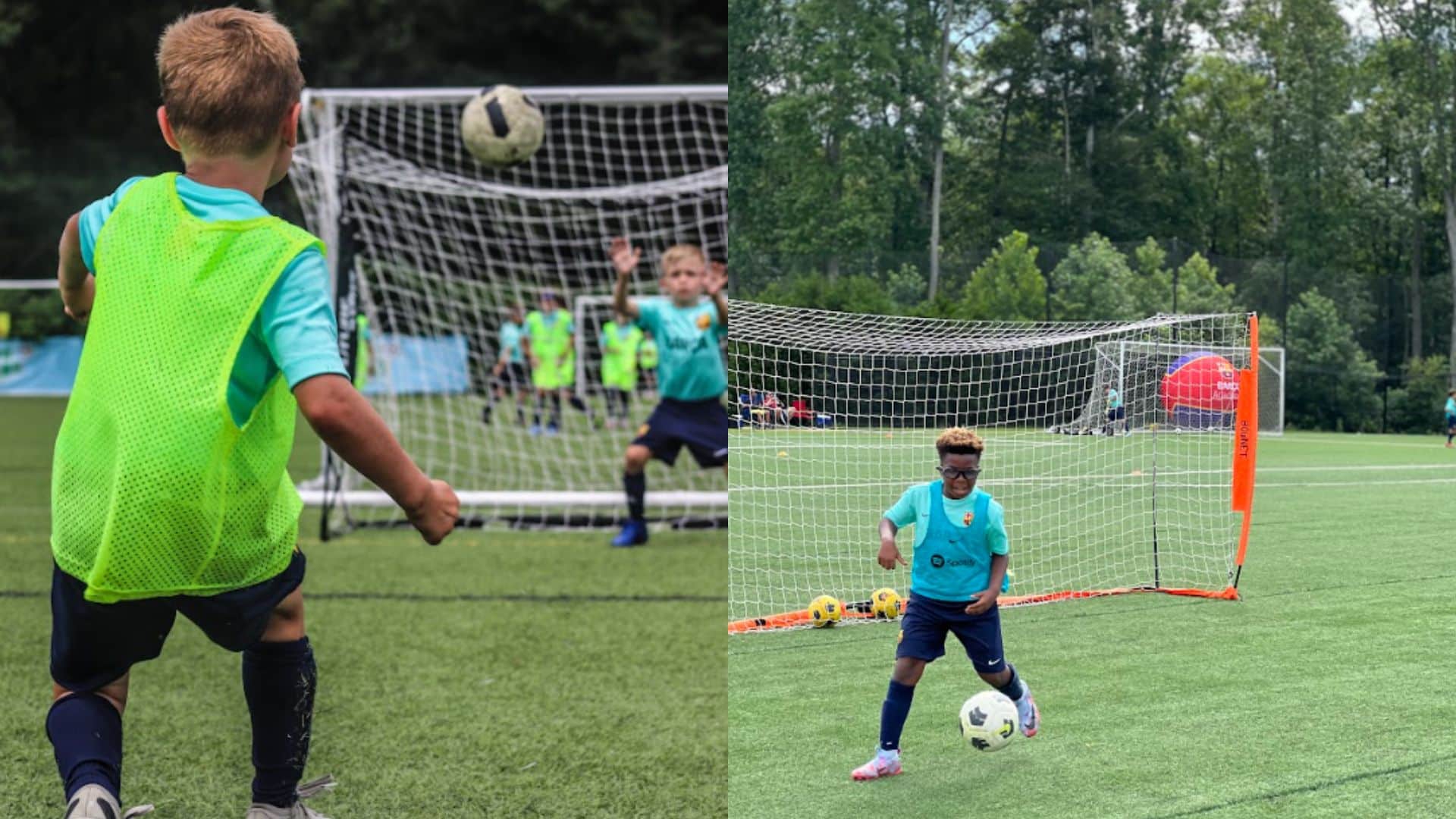
Basic Principles of Goalkeeper Footwork
So, let’s dive into what really makes a great goalkeeper. No, it’s not just about blocking those fiery shots or making spectacular jumps. It’s largely about footwork.
Now, don’t get me wrong, all aspects of being a goalkeeper are crucial, but having excellent footwork can make a world of difference on the field.
First, let’s talk about balance. Balance makes the difference between a wobbly stance and a firm, grounded one. A goalkeeper needs to be able to move swiftly and smoothly without losing their footing. This comes from having a balanced stance.
- Wide stance: Keep your feet shoulder-width apart to distribute your weight evenly.
- Flexed knees: Bend your knees slightly. This position allows for quick movement in any direction.
- Centered weight: Your weight should be on the balls of your feet, not your heels. This facilitates quick reactions and movement.
Okay, got the balance part? Great. Now, let’s move on to movement. It’s not about moving fast; it’s about moving right.
- Short steps: When moving side to side, make sure to take short steps. It keeps you ready to change direction quickly and easily.
- Shuffle, don’t cross: Avoid crossing your feet when moving side to side. Instead, shuffle your feet. It’s quicker and diminishes the risk of tripping.
- Forward and backward: When moving forward or backward, use crossover steps for maximum speed and efficiency.
Next, let’s talk about something that might seem a little less obvious: anticipation. You need to always be thinking one step ahead.
- Read the game: By understanding the flow of the game, you can anticipate where the ball may end up and position yourself accordingly.
- React quickly: No matter how well you can read the game, you need to be able to react immediately to sudden changes. This comes with practice and experience.
Finally, we have technique. Your footwork technique can make or break your performance as a goalkeeper.
- Stay light: Avoid pounding your feet on the ground. Stay light and get ready to pounce when needed.
- Keep your arms free: While your feet do much of the work, your arms help guide your movement. Don’t let them just hang by your side.
There you have it – the basic principles of goalkeeper footwork. Now, remember, knowing them is one thing, but mastering them is another. It takes time and practice, so don’t get discouraged if you don’t get it right away. Keep practicing, and you’ll see the improvement in no time!
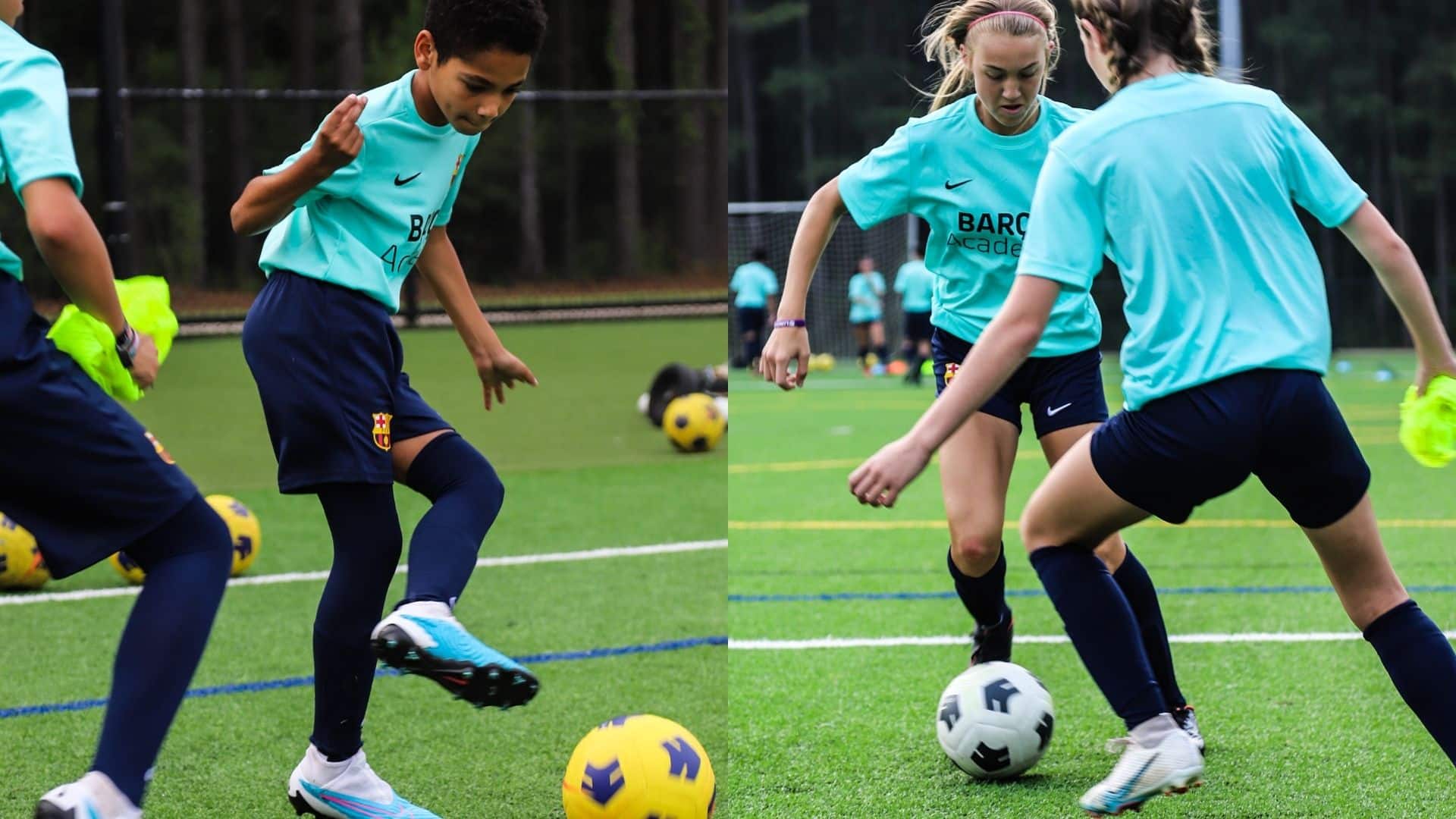
Five Essential Footwork Drills for Goalkeepers
Goalkeepers, it’s time to put the best foot forward! Let’s dive in to discuss five essential footwork drills that can help any goalkeeper reach their full potential. Remember, practice makes perfect!
1. Sideways Shuffling
This one is a classic. Sideways shuffling is all about improving your lateral movement. Position yourself between two cones set about 10 yards apart. Start at one cone and shuffle sideways as quickly as possible to the other, keeping your body square to the field. Then shuffle back. Repeat this for several reps. It’s simple, but it improves your agility and speed, making it easier to reach those challenging corner shots.
2. Forward and Backward Sprints
Forward and backward sprints are great for improving your overall speed and agility. Place two cones about 5 yards apart. Start at one cone, sprint forward to the other, touch it, and then immediately sprint backward to the original cone. Repeat for several sets. This drill will help you move swiftly on your line and quickly recover if the ball gets behind you.
3. T-Drills
The T-drill takes the forward and backward sprint to the next level. It combines forward, backward, and lateral movement. Set up three cones in a T-formation. Sprint forward from the base of the T to the center cone, shuffle laterally to the left cone, shuffle right to the opposite cone, then back to the center before sprinting backward to the base. Repeat this drill multiple times to increase your agility and speed in all directions.
4. Lateral Bound
The lateral bound drill is designed to improve your explosive power and sideward movements. Stand on your right foot, dip into a slight squat, and then explode upward and to your left, landing on your left foot. Immediately repeat in the opposite direction. The key to this drill is to spend as little time on the ground as possible, enhancing your explosiveness and quickness.
5. Cone Weaving
Finally, cone weaving is great for improving your footwork precision and control. Set up a line of cones about two feet apart. Start at one end and quickly weave through the cones, focusing on using short, quick steps. This drill can help improve your steps’ accuracy and efficiency, which is crucial for making those split-second saves.
These drills might sound demanding, but remember: the harder you train, the harder you are to beat! Regularly incorporating these footwork drills can substantially enhance your mobility and agility, transforming you into a formidable goalkeeper. Now go out there and save some goals!

Advanced Footwork Techniques and Drills for Elite Goalkeepers
Hey there, soccer fanatic! Have you ever watched a high-level, professional goalkeeper in action and wondered, “How on earth does he move that quickly?” Well, the secret’s in the footwork!
Top-tier goalkeepers know that mastering advanced footwork techniques and drills can significantly improve their game. So, let’s dive into these elite-level drills and techniques. Are you ready to take your goalkeeping skills to the next level?
1. Sidestep Drill
The first advanced drill is the sidestep drill. This drill improves your lateral quickness, enabling you to cover more of the goal in less time. Here’s how it works:
- Start by placing four cones in a straight line, each roughly two feet apart.
- Stand at one end of the line and sidestep as quickly as possible to the other end.
- Repeat this process, moving back and forth for about a minute.
Pro tip: Remember to keep your body low and knees slightly bent during the drill to maintain balance and control.
2. Triangle Drill
Next up is the triangle drill. This drill enhances your ability to change direction quickly and respond to unpredictable shots. Here’s the breakdown:
- Arrange three cones in a triangle formation, with each side measuring around five feet.
- Start at one cone, sprint to the second, then change direction and sprint to the third.
- Repeat this process, always returning to your starting position in a continuous loop for about a minute.
Pro tip: Make sharp, decisive movements and keep your eyes up, ready to react to the ball at all times.
3. Backpedal Drill
The backpedal drill is crucial for those situations when you need to retreat quickly into the goal. Here’s how it works:
- Start by placing two cones about ten feet apart.
- Sprint from one cone to the other, then backpedal to your starting position as quickly as possible.
- Repeat this drill for about a minute.
Pro tip: Stay on the balls of your feet during the backpedal to maintain balance and quickly transition to a different move if needed.
These advanced footwork drills for elite goalkeepers may seem challenging, but with consistent practice, they can become second nature. Remember, the key to these drills isn’t just speed – it’s maintaining control and balance while moving quickly. So, put on your gloves, step onto the field, and get ready to transform your footwork and game!
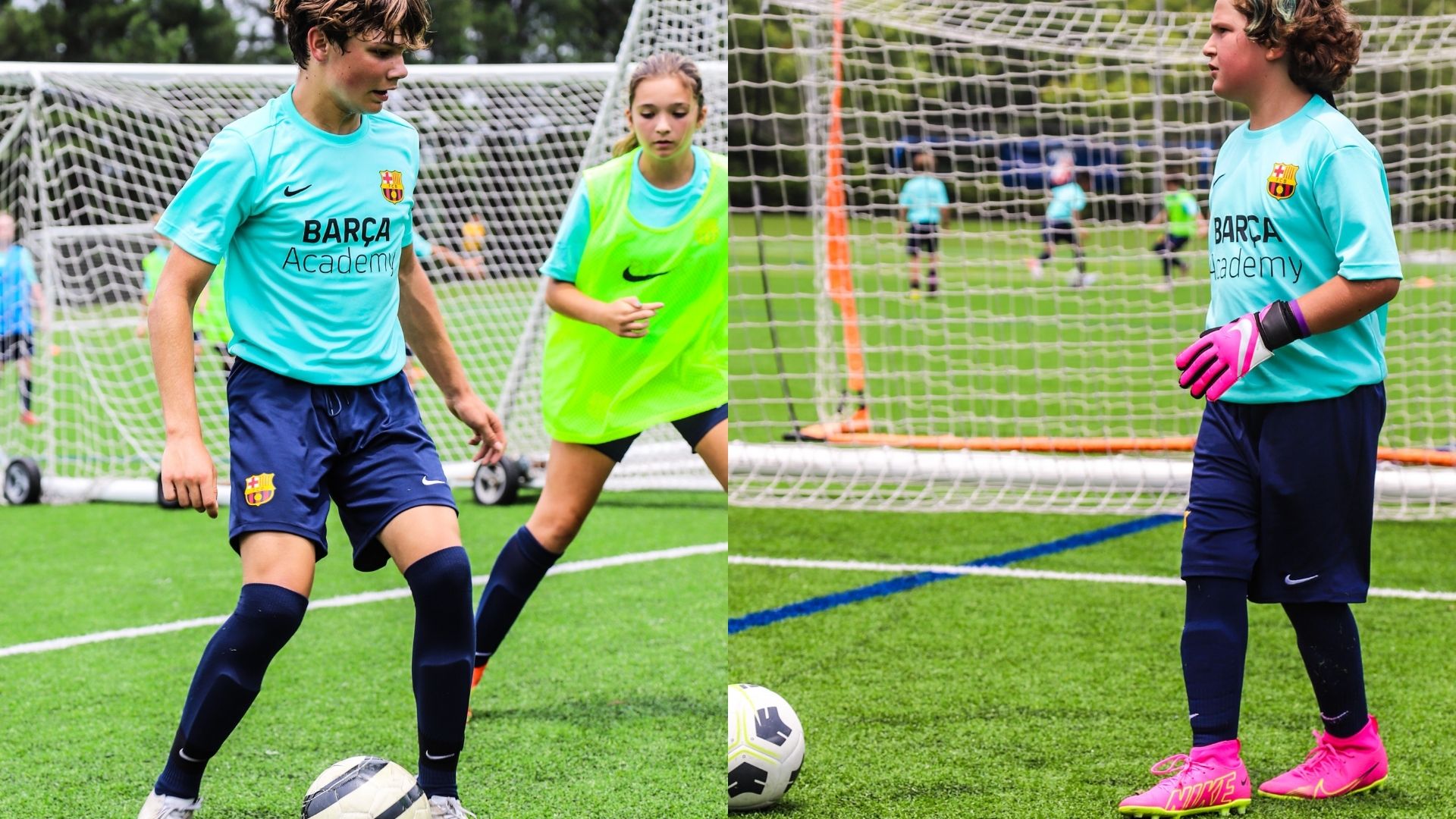
The Role of Agility Ladders in Goalkeeper Footwork Training
As a goalkeeper, the agility ladder is more than just another piece of training equipment. It’s the secret to improving your footwork, agility, and overall performance. If you’re looking to ascend the ranks of goalkeeping greatness, then it’s time to get friendly with the agility ladder.
What’s so Special About Agility Ladders?
Agility ladders are unique training tools that focus on improving a player’s quickness, speed, and most importantly footwork. Regular use of agility ladders can help you develop the fancy footwork necessary to make those lightning-fast saves. Sounds impressive, right? Well, it gets even better. The agility ladder also improves coordination, balance, and spatial awareness – all critical skills for a top-notch goalkeeper!
How to Use Agility Ladders for Goalkeeper Training?
- Two Feet In Each Square: This is the most basic exercise. Stand at one end of the ladder and run through it, placing both feet in each square. The goal here is to increase speed and precision.
- Side Shuffle: Stand sideways at one end of the ladder. Move sideways through the ladder, stepping in and out of each square. This drill is excellent for improving lateral movement.
- In-and-Out: Face the ladder and step in each square with both feet, then step out with one foot. This drill improves your footwork and agility.
- Bunny Hops: Hop into each square with both feet together. This drill helps improve your explosiveness and reaction time.
- Ickey Shuffle: This more advanced exercise involves stepping into a square with one foot, following with the other foot, then stepping out to the side. It’s a great way to increase foot speed and coordination.
Benefits of Incorporating Agility Ladders into Your Training
So why should you add agility ladder drills into your goalkeeper training routine? Well, the benefits are manifold and compelling:
- Faster Footwork: Agility ladder drills will significantly improve your foot speed, which is crucial in making those rapid saves.
- Improved Agility: These drills enhance your ability to change directions quickly – an essential skill for any goalkeeper.
- Better Balance and Coordination: Regular training with agility ladders can help improve your balance and coordination, making you a more effective goalkeeper.
In conclusion, the agility ladder is a goalkeeper’s best friend. It’s a powerful tool that can transform your footwork, agility, and overall performance. So why wait? Incorporate it into your training routine and see the difference it makes!
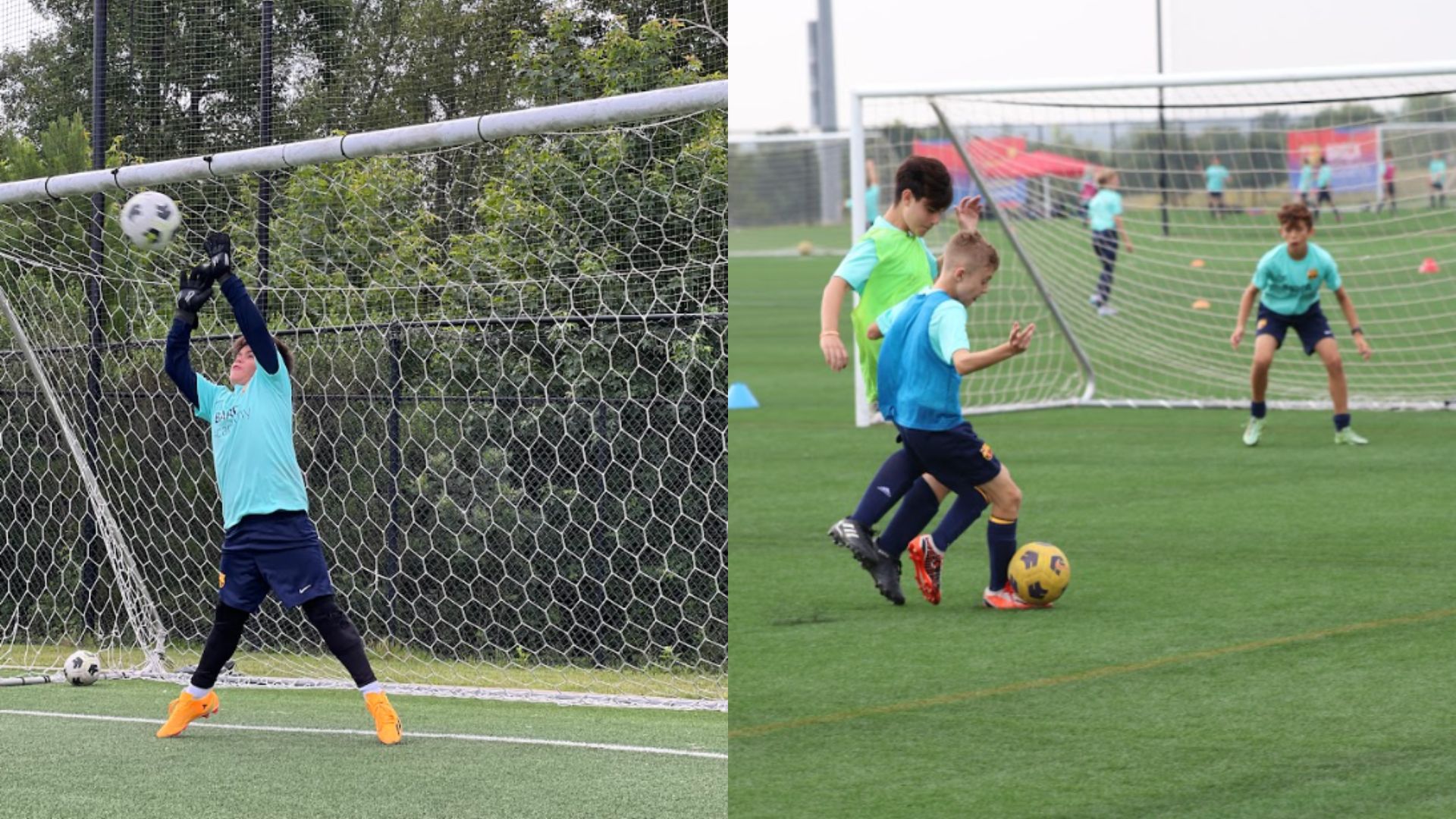
Incorporating Footwork Drills into Regular Goalkeeper Training
Alright, so you’ve been working hard on your goalkeeper footwork drills. You’ve seen improvement, and that’s fantastic. But, now you’re wondering, how do I incorporate these drills into my regular goalie training regimen? Well, you’re in the right place. Let’s kick it up a notch and delve into the best ways to integrate these drills into your everyday training. Remember, the key to becoming a great goalkeeper lies in consistent practice of your skills, and footwork is no exception.
Start with a Warm-Up
First things first, every training session should start with a good warm-up. This helps to prepare your muscles and joints for the rigorous activity ahead. An excellent way to incorporate your footwork drills into this warm-up is to perform them at a slower, more controlled pace. This not only helps to get your blood pumping but also enables you to focus on the precision and technique of each movement.
Integrate Drills into Skill Training
Next up, let’s talk about skill training. This is the part of your training where you’re working on specific goalkeeper skills like shot stopping, ball handling, and distribution. One way to integrate your footwork drills here is to include them as part of the build-up to these skills. For instance, before making a save, you could perform a footwork drill to get into position. This not only helps to improve your footwork but also trains you to use it effectively during a game situation.
Include in Conditioning
As a goalkeeper, your conditioning is crucial. You need to be able to move quickly and react to situations, even in the later stages of the game when fatigue sets in. This is where footwork drills can come in handy. Incorporating them into your conditioning sessions can improve your stamina and foot speed. Plus, it’s a great way to keep your conditioning workouts varied and interesting!
End with a Cool Down
Last but not least, don’t forget about the cool down. This is a great time to wind down and review what you’ve learned. Consider ending your training session with some light footwork drills. It’s a great way to reinforce the movements and techniques you’ve been working on. Plus, it can help to ease out of the vigorous activity and allow your body to gradually return to its resting state.
There you have it. By weaving footwork drills into the fabric of your regular goalkeeper training, you’ll ensure you’re consistently working on this crucial aspect of your game. So, go on, lace up those gloves and give it a try. You’ll be stepping up your game in no time!
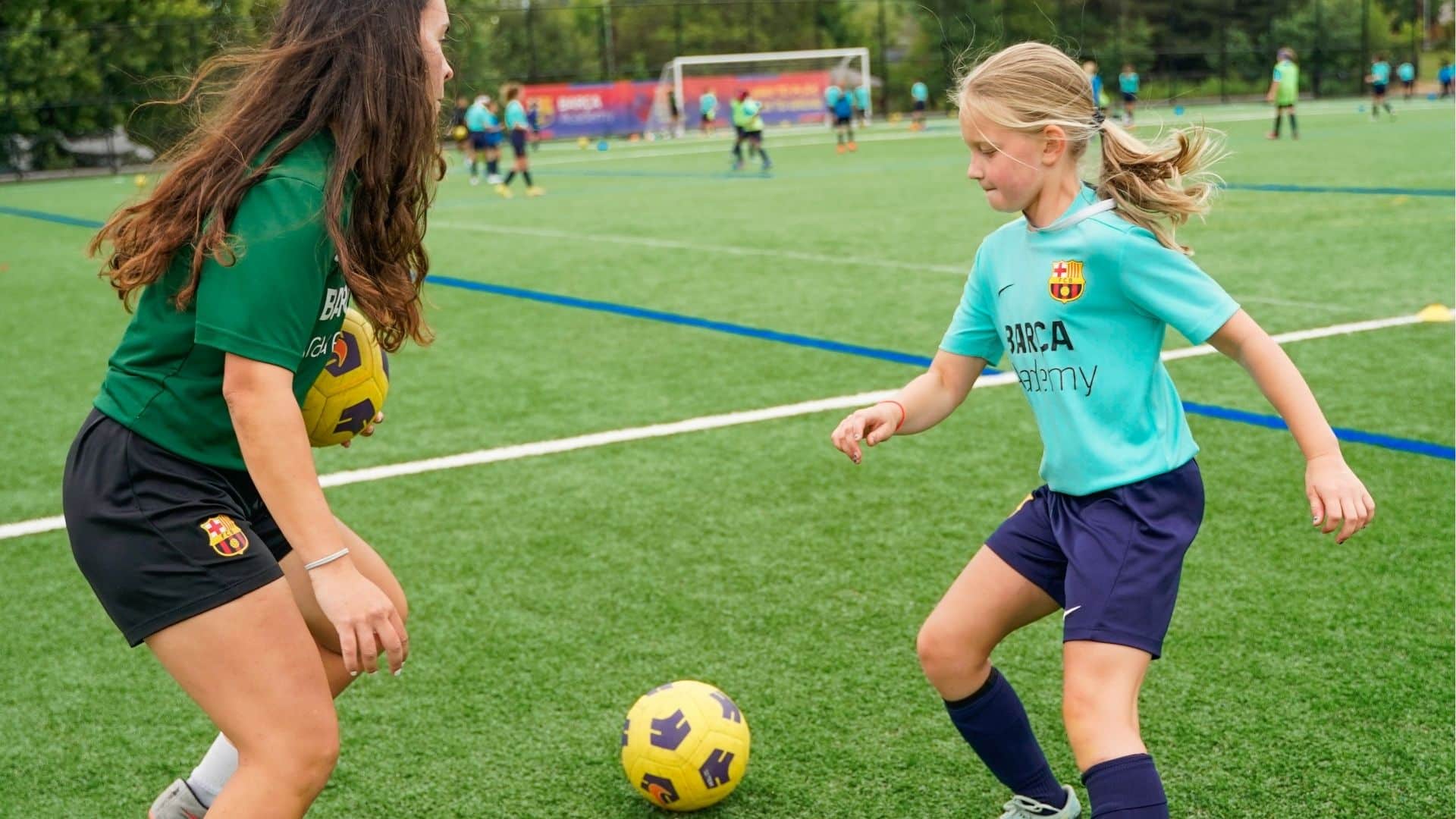
Case Studies: How Top Professional Goalkeepers Improve Their Footwork
When it comes to football, some may think that being a goalkeeper is a less demanding position, but it’s far from the truth. The key to delivering stellar performances as a goalie lies in footwork. Let’s take a closer look at how some of the world’s top professional goalkeepers have improved their footwork and continue to do so.
David De Gea
Manchester United’s David De Gea is regarded as one of the best goalkeepers in the world, and his superior footwork is a significant part of his success. De Gea’s training regime includes specific footwork drills that enhance his agility, speed, and balance. From cone drills to ladder exercises, he spends significant portions of his training sessions working on his footwork. He also incorporates rebounding exercises to improve his reaction time and precision.
Keylor Navas
Keylor Navas, the Costa Rican goalie currently playing for Paris Saint-Germain, is another exceptional example. Navas attributes much of his success to his intensive footwork training. His trainer uses different techniques such as multi-directional movement drills and quick-step exercises to develop his foot speed and agility. These drills not only help Navas move swiftly across the goal line but also allow him to maintain stability even after quick, irregular movements.
Alisson Becker
Alisson Becker, Liverpool’s star goalkeeper, is renowned for his remarkable footwork. Becker often uses balance boards during his training sessions to improve his balance and stability. This exercise boosts Becker’s ability to change direction swiftly without losing balance, which is a critical skill for a goalkeeper. Additionally, Becker’s training regime includes agility ladder drills for speed and precision.
Conclusions
Looking at the training regimes of these top goalkeepers, it’s clear that footwork is a vital aspect of their success. Each player uses a combination of drills and exercises designed to improve agility, speed, balance, and reaction time. These drills not only help them make saves but also enable them to recover quickly and maintain stability during the game.
So, if you’re an aspiring goalkeeper or a coach seeking to improve your team’s performance, remember to give footwork the attention it deserves. Include a variety of footwork drills in your training sessions, and don’t forget to make it fun! After all, even the best goalkeepers in the world didn’t develop their skills overnight. With consistent practice and perseverance, you too can improve your footwork and become a more effective goalkeeper.





